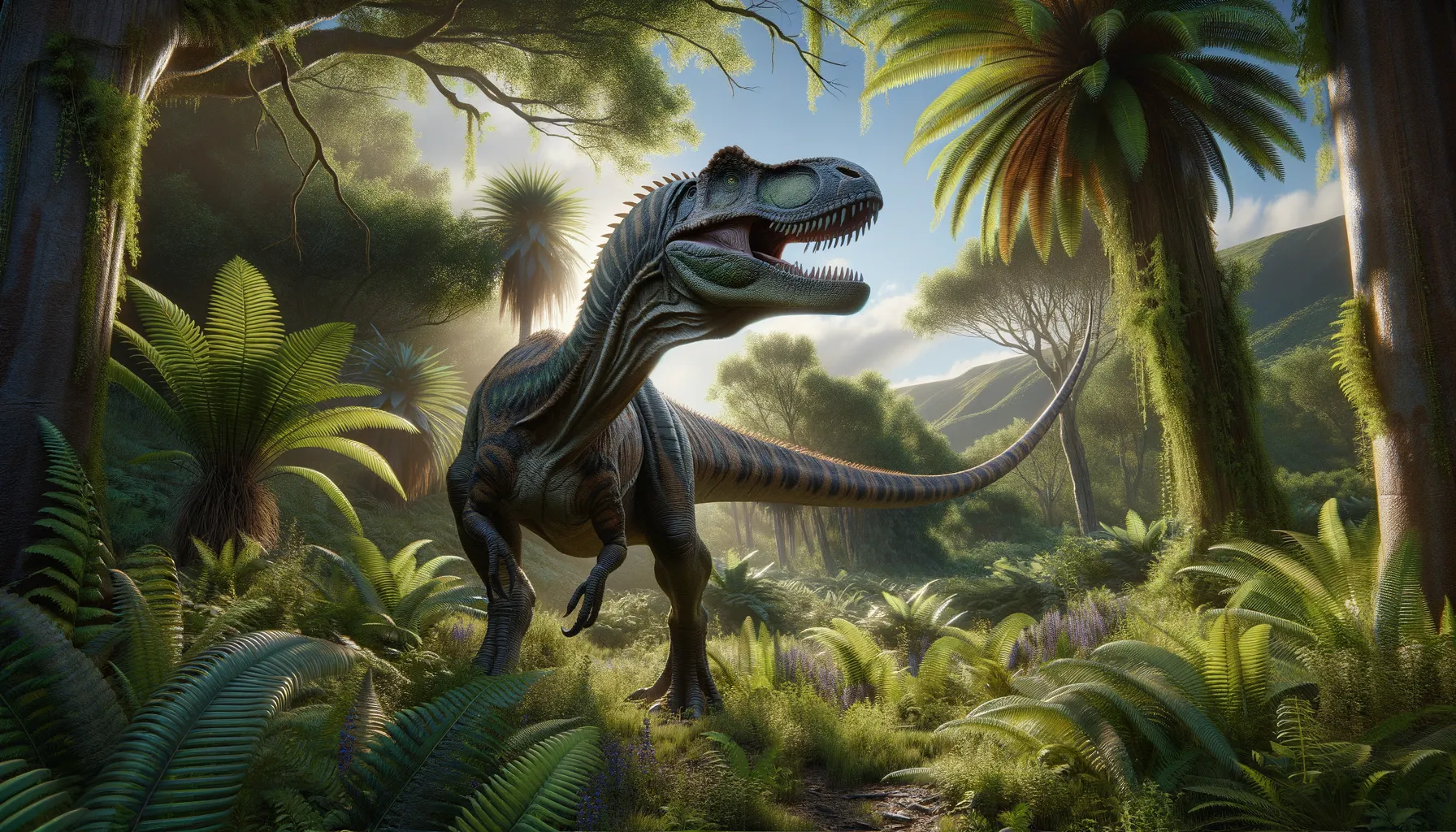
Galleonosaurus
Agile herbivore of ancient Gondwana.
Period
Cretaceous
Length
Around 2 to 4 meters in length.
Height
Approximately 1 to 2 meters tall at the hip.
Weight
Estimated to weigh around 100 to 150 kilograms.
Galleonosaurus was a small, herbivorous dinosaur that roamed the ancient forests of Australia during the Early Cretaceous period. Known for its agile movement and distinct teeth adapted for chewing tough vegetation, it represents an important piece of the puzzle in understanding the diverse dinosaur ecosystems that once existed in Gondwana. While it shares features with other ornithopods, its unique characteristics have intrigued paleontologists studying dinosaur evolution.
Diet
Galleonosaurus primarily fed on a variety of vegetation, including ferns and conifer leaves. Its teeth were specially adapted to grind tough plant material, ensuring efficient digestion.
Hunting
As a herbivore, Galleonosaurus did not hunt but likely foraged for food in groups. It relied on its speed and agility to evade predators rather than engage in predatory behavior.
Environmental challenges
Galleonosaurus faced various environmental challenges, including changes in climate and vegetation. Seasonal variations could impact food availability, requiring adaptability in its feeding habits. Predators also posed a consistent threat, necessitating vigilance and speed for survival.
Speed
Moderate due to its bipedal nature.
Lifespan
Approximately 10 to 20 years in the wild.
First discovery
Discovered in Victoria, Australia in 2019.
Fun Facts
- Galleonosaurus is named after the shape of its jaw, which resembles the hull of a galleon ship.
- This dinosaur was a small plant-eater that lived during the Early Cretaceous period, around 125 million years ago.
- Fossils of Galleonosaurus have been found in Australia, showcasing its ancient presence in a region not commonly associated with dinosaurs.
- The discovery of Galleonosaurus adds more diversity to the group of small, plant-eating ornithopod dinosaurs.
- This dinosaur is believed to have been a fast runner, relying on its speed to escape predators.
- Galleonosaurus fossils provide important clues about the environment and ecosystems of Australia's past.
- The finding of Galleonosaurus highlights the importance of international collaboration in paleontological research.
Growth and Development
Galleonosaurus grew relatively quickly during its early life stages to reach maturity. Its growth was likely influenced by environmental conditions and food availability. Juveniles might have formed social groups, providing protection and learning opportunities.
Habitat
Its habitat consisted of lush, temperate forests in what is now southeastern Australia. Galleonosaurus would have thrived in areas with abundant plant life. These environments also provided natural shelters against predators.
Interaction with other species
Galleonosaurus likely coexisted with various other dinosaur species, both herbivorous and carnivorous. Competition for resources such as food and water would have shaped its interactions. Cooperative behaviors might have developed to enhance survival chances.
Natural lifespan
In ideal conditions, Galleonosaurus lived up to 20 years.
Reproduction
Reproduction likely involved laying eggs, as seen in many similar dinosaurs. Parental care details remain uncertain, though some level of protection for nests could have been common. Breeding habits would have been influenced by environmental factors and seasonal changes.
Social behaviour
Galleonosaurus may have exhibited social behavior, forming small herds for mutual protection. Social structures could have helped with resource sharing and predator vigilance. Communication among individuals likely played a role in maintaining group cohesion.
Fossil locations
Fossils of Galleonosaurus have been primarily found in Victoria, Australia. The discovery in this region provides insights into the diverse dinosaur fauna of ancient Gondwana. Ongoing excavations continue to uncover new information about its existence and adaptation strategies.
